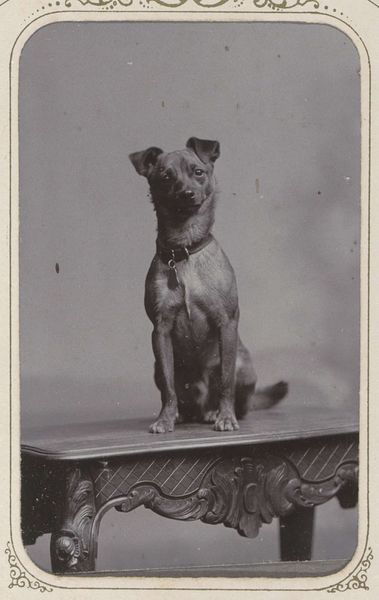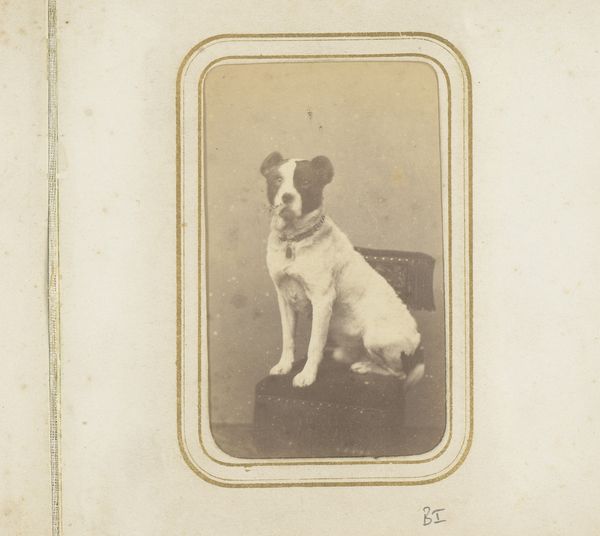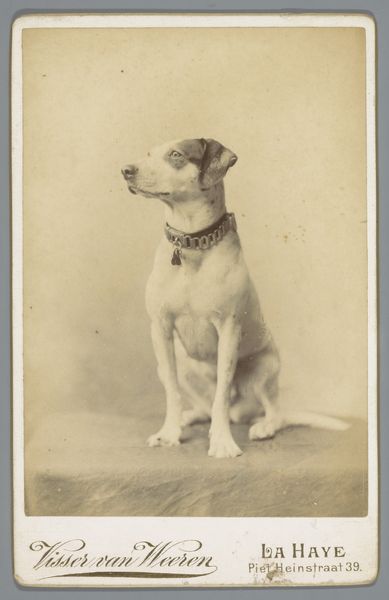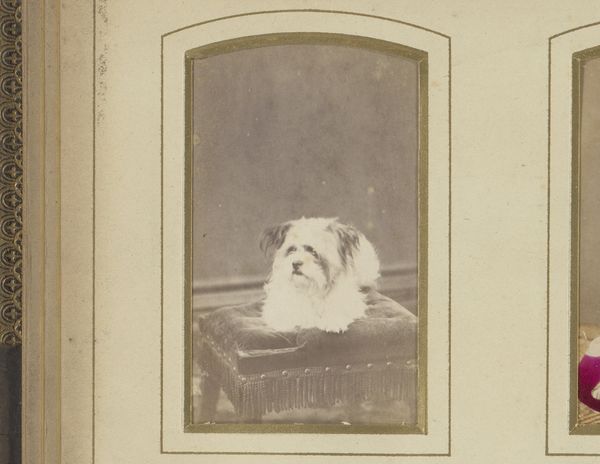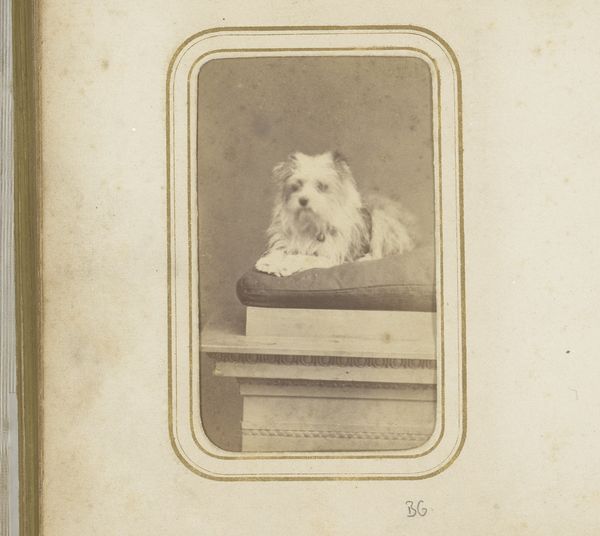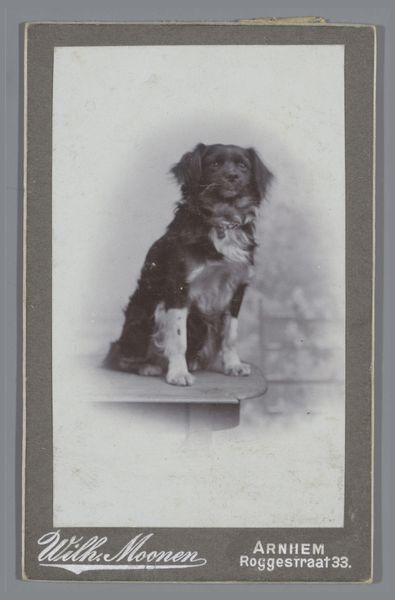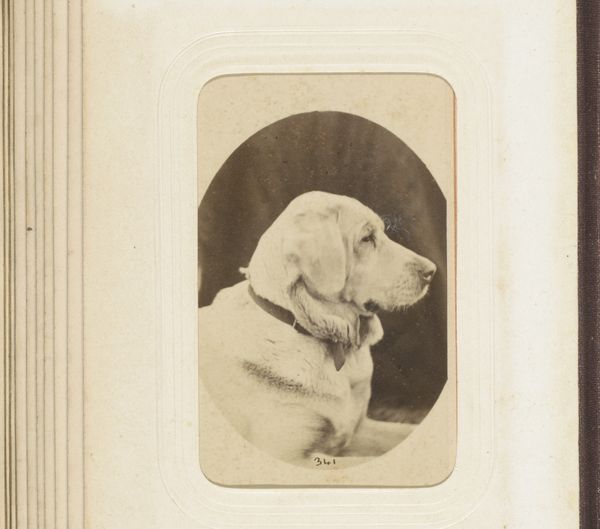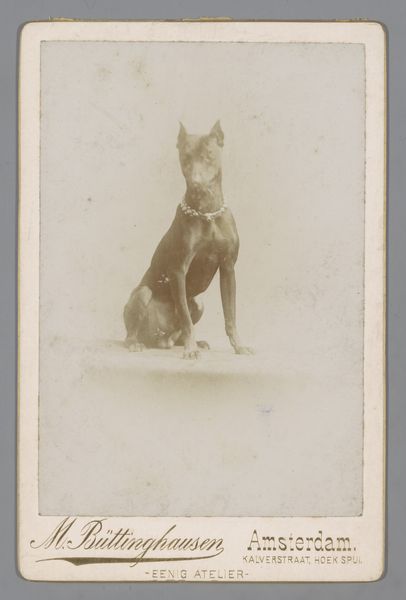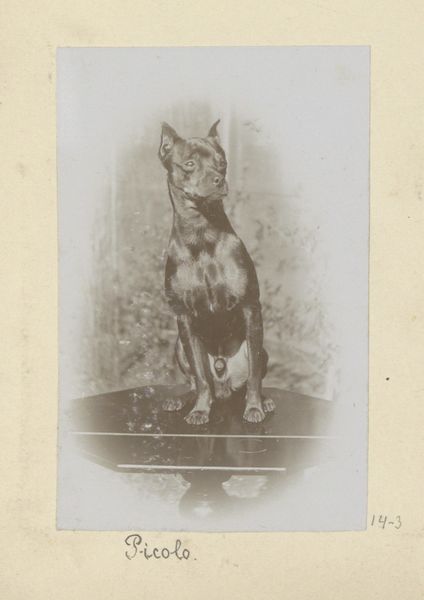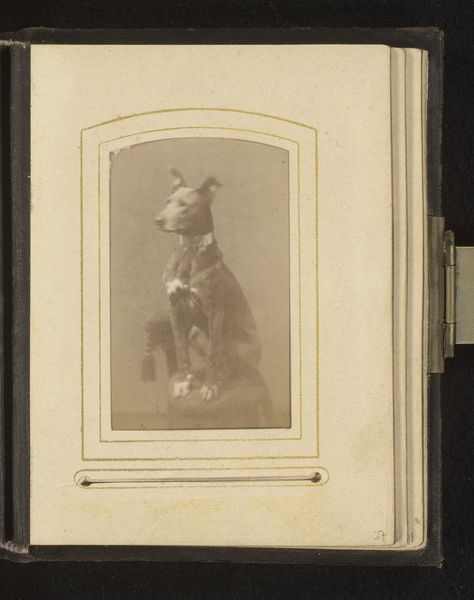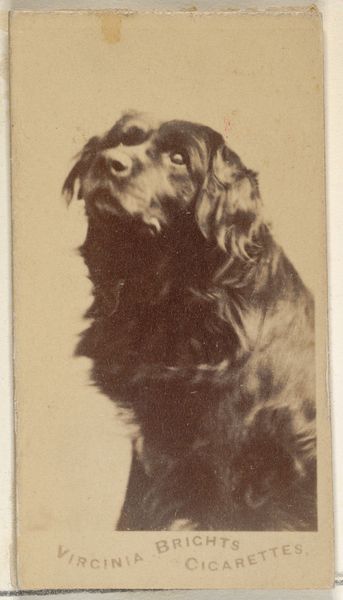
photography
#
portrait
#
still-life-photography
#
animal
#
dog
#
photography
#
19th century
Dimensions: height 91 mm, width 54 mm
Copyright: Rijks Museum: Open Domain
Curator: L.J. Goudman's "Liggende hond genaamd Bello," or "Dog named Bello", a photograph dating from circa 1860 to 1890, captures a striking image of canine companionship. What are your initial thoughts on this piece? Editor: Well, beyond the immediate charm of the subject, I'm struck by the tonal range, the delicate gradation of light and shadow on Bello’s fur. There is a softness that feels remarkably modern despite its clear historical setting. Curator: Considering the historical moment, the act of photographing a pet elevates the status of the animal from utilitarian object to companion, which in turn reflects evolving social values of the bourgeoisie in that era, suggesting a move towards sentimentality and companionate relationships. Editor: The staging also seems significant. The dog is posed on a draped table against a painted backdrop, elevating it, and yet trapping it. Is that a signifier of class control, or just convention? Curator: Absolutely, the staging speaks volumes. The composed setting also indicates an intersection of class and gender as this type of photograph becomes more available to women within the domestic sphere. It points to the shift of pets’ positionality within a feminized interior. Editor: Speaking technically, the detail, even with the sepia tones, is amazing. Look at the textures Goudman captures, from the dog's fur to the drape of the table, all rendered with meticulous detail. What do you read into it? Curator: The photographic still life serves as a mirror to the human condition. Bello here can act as a signifier for faithfulness, unconditional love and devotion—attributes desired, projected onto and also extracted from domestic companions in that period. It encourages the viewer to engage with discussions on animal rights and the anthropomorphism inherent in domestic relationships. Editor: Yes, there's something quite timeless in the dog's expression, isn't there? An appeal for understanding that transcends time. Thank you for bringing all that rich cultural background to bear. Curator: And thank you for helping us consider Goudman’s thoughtful composition and what it reveals about 19th-century sentimental constructs that carry through today.
Comments
No comments
Be the first to comment and join the conversation on the ultimate creative platform.


